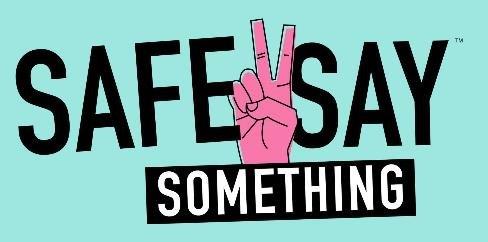Child with a Disability
A child with a disability means a child evaluated in accordance with IDEA §§ 3000.304 through 300.311 as having mental retardation, a hearing impairment (including deafness), a speech or language impairment, a visual impairment (including blindness), a serious emotional disturbance (referred to in this part as “emotional disturbance”), an orthopedic impairment, autism, traumatic brain injury, an other health impairment, a specific learning disability, deafblindness, or multiple disabilities, and who, by reason thereof, needs special education and related services.
For children from 3 years to Kindergarten entrance, the Pennsylvania Department of Education Office of Child Development and Early Learning (OCDEL) operates the preschool early intervention program. OCDEL provides early intervention services through MAWAs (Mutually Agreed Upon Written Arrangements) typically with Intermediate Units or school districts. Legislative and regulatory guidance is provided through IDEA Part B, Pennsylvania”s Act 212, the Early Intervention Services System Act of 1990, Chapter 14, and the Basic Education Circulars related to early intervention. Regional services and programs are available through Riverview Intermediate Unit #6 including support services such as speech therapy, physical therapy, parent education/supports and other family-centered services assist in child development and may be included in a family’s early intervention program.
Definitions of Disability Terms
Autism: a developmental disability significantly affecting verbal and nonverbal communication and social interaction, generally evident before age three that adversely affects a child’s educational performance. Other characteristics often associated with autism are engagement in repetitive activities and stereotyped movements, resistance to environmental change or change in daily routines, and unusual responses to sensory experiences.
Deaf-blindness: concomitant hearing and visual impairments, the combination of which causes such severe communication and other developmental and educational needs that they cannot be accommodated in special education programs solely for children with deafness or children with blindness.
Deafness: a hearing impairment that is so severe that the child is impaired in processing linguistic information through hearing, with or without amplification that adversely affects a child’s educational performance.
Developmental delay: a child who is less than the age of beginners (Kindergarten) and at least 3 years of age is considered to have a developmental delay when one of the following exists: the child’s score, on a developmental assessment device, on an assessment instrument which yields a score in months, indicates that the child is delayed by 25% of the child’s chronological age in one or more developmental areas; and/or the child is delayed in one or more of the developmental areas, as documented by test performance of 1.5 standard deviations below the mean on standardized tests.
Emotional disturbance: a condition exhibiting one or more of the following characteristics over a long period of time and to a marked degree that adversely affects a child’s educational performance: an inability to learn that cannot be explained by intellectual, sensory, or health factors; an inability to build or maintain satisfactory interpersonal relationships with peers and teachers; inappropriate types of behavior or feelings under normal circumstances; general pervasive mood of unhappiness or depression; and/or a tendency to develop physical systems or fears associated with personal or school problems. Emotional disturbance includes schizophrenia. The term does not apply to children who are socially maladjusted unless it is determined that they have an emotional disturbance as previously explained.
Hearing impairment: an impairment in hearing whether permanent or fluctuating that adversely affects a child’s educational performance but that is not included under the definition of deafness.
Intellectual disability: significantly subaverage general intellectual functioning, existing concurrently with deficits in adaptive behavior and manifested during the developmental period that adversely affects a child’s educational performance.
Multiple disabilities: concomitant impairments (such as mental retardation-blindness or mental retardation-orthopedic impairment), the combination of which causes such severe educational needs that they cannot be accommodated in special education programs solely for one of the impairments. Multiple disabilities do not include deaf-blindness.
Orthopedic impairment: a severe orthopedic impairment that adversely affects a child’s educational performance. The term includes impairments caused by a congenital anomaly, impairments caused by disease (e.g., poliomyelitis, bone tuberculosis), and impairments from other causes (e.g., cerebral palsy, amputations, and fractures or burns that cause contractures).
Other health impairments: having limited strength, vitality or alertness, including a heightened alertness to environmental stimuli, that results in limited alertness with respect to the educational environment that is due to chronic or acute health problems such as: asthma, attention deficit disorder or attention deficit hyperactivity disorder, diabetes, epilepsy, a heart condition, hemophilia, lead poisoning, leukemia, nephritis, rheumatic fever, sickle cell anemia and Tourette syndrome and adversely affects a child’s educational performance.
Specific learning disability: a disorder in one or more of the basic psychological processes involved in understanding or in using language, spoken or written, that may manifest itself in the imperfect ability to listen, think, speak, read, write, spell or do mathematical calculations, including conditions such as: perceptual disabilities, brain injury, minimal brain dysfunction, dyslexia, and developmental aphasia. Disorders not included include: learning problems that are primarily the result of visual, hearing, or motor disabilities, of mental retardation, of emotional disturbance or of environmental, cultural, or economic disadvantage.
Speech or language impairment: a communication disorder, such as stuttering, impaired articulation, a language impairment, or a voice impairment that adversely affects a child’s educational performance.
Traumatic brain injury: an acquired injury to the brain caused by an external physical force, resulting in total or partial functional disability of psychosocial impairment, or both, that adversely affects a child’s educational performance. Traumatic brain injury applies to open or closed head injuries resulting in impairments in one or more areas, such as: cognition, language, memory, attention, reasoning, abstract thinking, judgment, problem-solving, sensory, perceptual and motor abilities, psychosocial behavior, physical functions, information processing, and speech. Traumatic brain injury does not apply to brain injuries that are congenital or degenerative, or to brain injuries induced by birth trauma.
Visual impairments including blindness: an impairment in vision that, even with correction, adversely affects a child’s educational performance. The term includes both partial sight and blindness.
Additional Information Links
Family Educational Rights and Privacy Act (FERPA) – a Federal law that protects the privacy of student education records. The law applies to all schools that receive funds under an applicable program of the U.S. Department of Education. http://www.ed.gov/policy/gen/guid/fpco/ferpa/index.html
Gaskin v. Pennsylvania Department of Education (PDE) – a lawsuit resulting in mandated changes in some special educational services. As part of the court settlement, PDE is requiring all school districts to share the Notice of Proposed Settlement (Notice) to the parents of students receiving special education services. Parents may access the Notice on the following websites: http://www.blwd.k12.pa.us/district_info/special_education/Shared%20Documents/Supplementary%20Aids%20and%20Services%20(SaS)%20FactSheet.pdf
Individuals with Disabilities Education Improvement Act (IDEIA) – IDEIA 2004 maintains the basic principles of the law – a free appropriate public education for all students with disabilities, in the least restrictive environment – however, there are many changes and modifications to the IEP process and other aspects of the identification and evaluation of students with disabilities. http://faculty.frostburg.edu/mbradley/disabilities/IDEA.html


